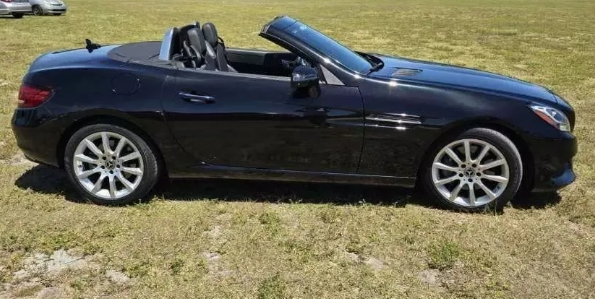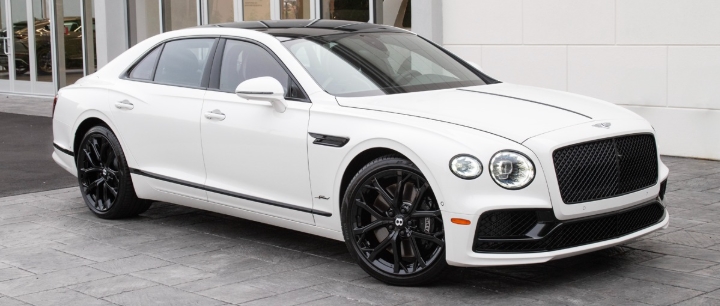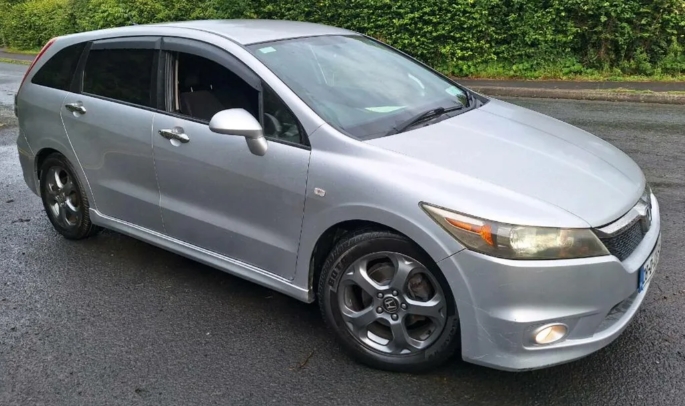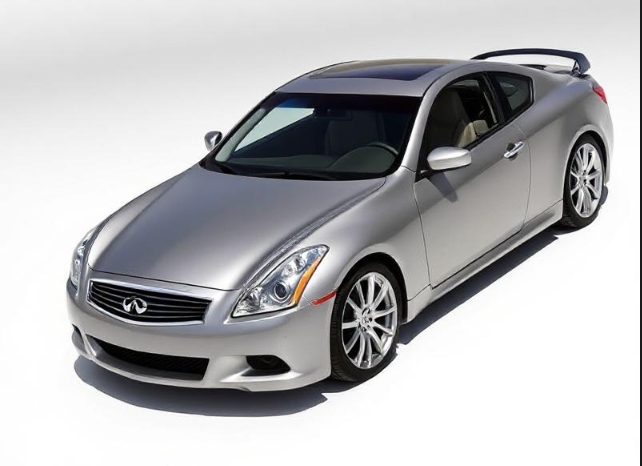The Enduring Charm of the Fiat Barchetta: A Journey Through Evolution
The Fiat Barchetta, a name that evokes images of sun-drenched coastal roads and spirited driving, is more than just a car; it’s a declaration of intent. It represents a refreshingly analog approach to motoring in an increasingly digital and homogenous automotive landscape. Launched in 1995, this compact, two-seater roadster from the Italian marque, Fiat, captured the hearts of enthusiasts with its playful design, agile handling, and unpretentious fun. While its production run spanned just over a decade and saw minimal mechanical evolution, the Barchetta’s story is one of refined aesthetics and enduring personality, making it a classic in its own right.
Genesis and Design Philosophy: A Return to Pure Driving Pleasure
In the mid-1990s, the automotive world was still reeling from the influence of the 1980s, with many manufacturers gravitating towards practicality and efficiency. While SUVs and larger sedans dominated the market, there was a discernible yearning for simpler, more engaging driving experiences. Fiat, a brand with a rich history of producing iconic, small, and fun-to-drive cars, saw an opportunity to tap into this sentiment.
The Barchetta, project name “Tipo B,” was conceived as a spiritual successor to Fiat’s storied roadsters of the past, such as the 1200, 1500, and X1/9. The design brief was clear: create a stylish, affordable, and engaging convertible that prioritized driving enjoyment above all else. The result was a car that unapologetically embraced its Italian heritage. Designed by Andrea Pininfarina, under the then-head of Fiat’s design center, Peter Brock, the Barchetta exuded a timeless elegance. Its rounded, flowing lines, prominent grille, and classic convertible silhouette were instantly recognizable and charming. Unlike many rivals that opted for aggressive styling, the Barchetta presented a softer, more approachable, yet undeniably sporty demeanor.
The choice of a front-wheel-drive platform, shared with the Fiat Punto, was a pragmatic decision that helped keep production costs down and ensured accessibility for a wider audience. However, Fiat’s engineers worked diligently to imbue the chassis with a sporting edge, focusing on sharp steering, well-balanced suspension, and a responsive braking system. The intention was to deliver a driving experience that was both engaging and forgiving, making it accessible to a broad spectrum of drivers.
.
THIS is GOOD stuff if your car is in need:

.
The Debut: 1995 – A Spark Ignites
The Fiat Barchetta officially debuted at the Geneva Motor Show in March 1995, immediately turning heads with its distinctive styling and the promise of open-top motoring. It was positioned as an accessible alternative to more expensive sports cars, offering a unique blend of Italian flair and driving fun.
The Initial Model: The Barchetta (1995-2003)
From its launch in 1995 until the significant facelift in 2003, the Barchetta remained largely consistent in its core mechanicals and design.
- Engine: The sole engine offered was a naturally aspirated 1.8-liter, 16-valve inline-four cylinder engine. This powerplant, part of Fiat’s F.I.R.E. (Fully Integrated Robotized Engine) family, produced approximately 130 horsepower. While not a powerhouse by modern standards, it was perfectly suited to the Barchetta’s lightweight construction and nimble chassis. The engine was known for its enthusiastic revving nature and a characterful exhaust note that added to the overall driving experience.
- Transmission: A five-speed manual gearbox was the only transmission choice, reinforcing the car’s driver-focused ethos.
- Drivetrain: The Barchetta was exclusively front-wheel-drive.
- Interior: The cabin was a simple yet well-appointed affair, designed for two occupants. Fiat aimed for a balance of sportiness and comfort, with supportive seats, clear instrumentation, and a driver-oriented dashboard. While not luxurious, the materials were generally of good quality, and the overall feel was one of purposeful design.
Key Features of the Original Barchetta:
- Manual Soft-Top: The quintessential convertible experience was delivered through a manually operated fabric soft-top. While not as convenient as an electric roof, its simplicity contributed to the car’s lightweight and cost-effective design. Deploying it was a quick and easy process.
- Lightweight Construction: The Barchetta’s relatively small size and use of lighter materials contributed to its agile handling and spirited performance.
- Independent Suspension: The car featured independent suspension all around, with MacPherson struts at the front and a multi-link setup at the rear, contributing to its composed and engaging ride.
- Disc Brakes: All-around disc brakes provided effective stopping power for the car’s performance capabilities.
No Formal Trim Levels (Initially): The Barchetta Defined Itself
Interestingly, in its initial years, Fiat did not offer distinct trim levels in the traditional sense for the Barchetta. The car was largely sold as a single, well-equipped model. The focus was on the core experience of the Barchetta, and optional extras were more about individual personalization than tiered equipment packages. This approach further emphasized the car’s straightforward and purist nature.
Mid-Life Evolution: The Facelift and the Return of the “Limited Edition” Concept
While the core mechanics of the Barchetta remained largely unchanged throughout its production, Fiat recognized the need to refresh its styling and introduce some new elements to keep it competitive and exciting. This led to a significant facelift that debuted in late 2003 and was officially launched in early 2004.
The “Nuova Barchetta” (2004-2005)
The updated Barchetta, often referred to as the “Nuova Barchetta” or facelifted model, brought a series of subtle but effective enhancements:
- Revised Exterior Styling: The most noticeable changes were to the front and rear. The headlights were redesigned, giving the car a more modern and slightly more aggressive look. The front bumper was also restyled, incorporating a more prominent grille and integrated fog lights. The rear bumper also received minor tweaks.
- Interior Updates: The interior also saw some refinements. The dashboard received minor updates, including improved materials and a revised center console. New seat upholstery options and color schemes were introduced, offering a fresher feel.
- Mechanical Tweaks (Minor): While the 1.8-liter engine remained the same in principle, Fiat engineers made slight adjustments to improve emissions compliance and potentially enhance fuel efficiency. Power output remained largely the same at around 130 horsepower.
- New Wheel Designs: Updated alloy wheel designs were offered, further enhancing the car’s visual appeal.
The Reintroduction of “Special Series” and Trim Levels
With the facelift, Fiat also began to introduce more defined versions and special editions, moving away from the single-model approach of the early years. This allowed for greater personalization and catered to different customer preferences.
- Barchetta (Standard Facelift Model): This served as the base model, incorporating all the new styling and interior improvements.
- Special Editions: Fiat strategically used its tradition of creating “serie speciali” (special series) to inject excitement and exclusivity into the Barchetta’s lineup. These were not fundamentally different cars but rather versions with unique color schemes, badging, interior trim, and sometimes specific aesthetic enhancements. These special editions often celebrated anniversaries or aimed to appeal to specific tastes. Examples included:
- “Platinum” Edition: Often featured unique interior materials like leather upholstery and a more premium sound system. Exterior enhancements might have included special badging and exclusive alloy wheel designs.
- “Nautica” Edition: This edition was sometimes characterized by a focus on a more relaxed, open-air experience, potentially with unique interior fabrics and color combinations inspired by nautical themes.
- “Rouge” Edition: Typically denoted by a vibrant red exterior paint scheme and coordinating interior accents.
These special editions were crucial in maintaining the Barchetta’s appeal in its later years, offering buyers something distinct and desirable.
The Final Chapter: 2005-2006 – The Last Hurrah
The Fiat Barchetta’s journey concluded in 2005, with production ceasing in 2006. The market had shifted significantly, with a greater emphasis on more practical and technologically advanced vehicles. The Barchetta, with its charmingly analog nature, found itself in a niche market.
- Engine and Transmission: The 1.8-liter engine and five-speed manual transmission remained the standard and only offering until the very end.
- Limited Production and “Collection” Models: In its final years, Fiat produced limited runs and commemorated the end of the Barchetta with special “Collection” or “Limited Edition” models. These were often characterized by unique badging, special paint colors, and sometimes included a numbered plaque to signify their exclusivity. These served as a fond farewell to a beloved model.
Legacy and Enduring Appeal
The Fiat Barchetta’s production run, while relatively short and mechanically uneventful, was a testament to its enduring appeal. It wasn’t a car designed to chase lap times or conquer continents; it was built for the sheer joy of driving and the romance of open-top motoring.
- Timeless Design: The Barchetta’s design remains a strong point. Its classic proportions and elegant lines ensure it doesn’t look dated, even years after its discontinuation. It possesses a timeless charm that continues to attract enthusiasts.
- Driving Engagement: The focus on a fun, communicative driving experience is what truly defines the Barchetta. The responsive steering, well-balanced chassis, and the unfiltered connection to the road make it a delightful car to drive, particularly on winding country lanes or along coastal routes.
- Affordability and Accessibility: Compared to many other convertible sports cars, the Barchetta has always been a more accessible option, both in terms of initial purchase price and running costs. This has made it a popular choice for those seeking an affordable entry into the world of open-top motoring.
- Character and Personality: In an era of often sterile and homogenized car designs, the Barchetta stands out for its distinct personality. It’s a car that wears its Italian heritage with pride, offering a blend of style, practicality (for a two-seater), and undiluted driving pleasure.
The evolution of the Fiat Barchetta, therefore, is not a story of grand technical leaps but rather a narrative of subtle refinement and a steadfast commitment to its core philosophy. From its charming debut in 1995 to its stylish facelift in 2004 and its gentle farewell in 2005/2006, the Barchetta remained true to its promise: to offer an accessible, stylish, and undeniably fun roadster experience. It may not have been a technological marvel, but it was, and remains, a car with soul, embodying the enduring allure of the open road and the simple joy of a spirited drive.







